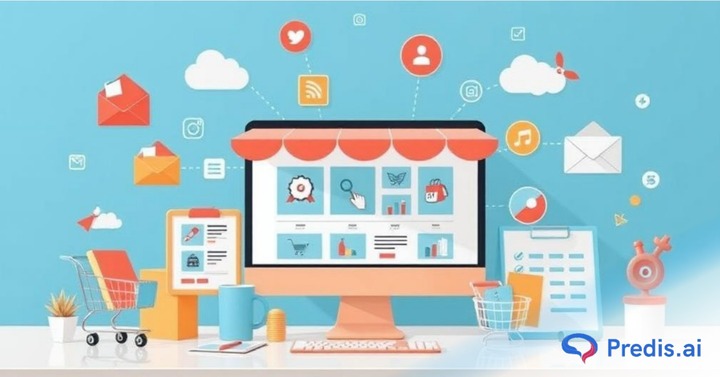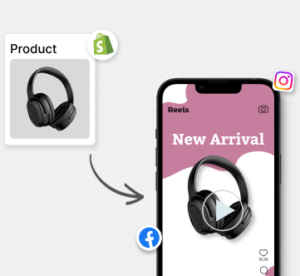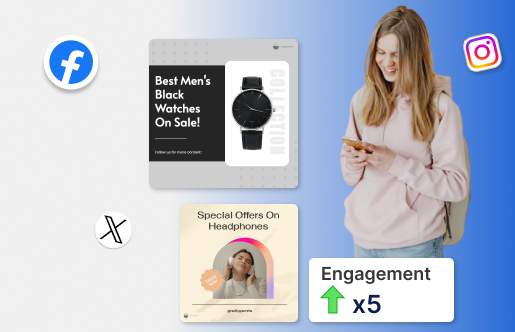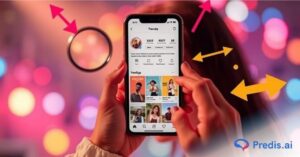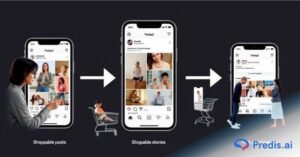Ever find yourself waiting for an important call only to be interrupted by an overzealous salesperson? Or are you searching for a crucial email amidst a sea of promotional messages? It’s frustrating, isn’t it?
For e-commerce store owners, striking the right balance in marketing is crucial. Your customers need to know you exist without feeling overwhelmed by cold calls or spammy emails. This is where inbound marketing comes into play—a smart strategy where customers come to you.
In this blog, we’ll explore ten effective inbound marketing strategies designed specifically for e-commerce stores. Ready to transform your marketing approach? Let’s dive in!
What Is Inbound Marketing For E-Commerce?
Before we get into inbound marketing strategies for e-commerce stores, let’s first understand what inbound marketing is.
Simply put, inbound marketing is a series of marketing tactics wherein your target customers approach your business and are strategically guided further down the sales funnel. Inbound Marketing can be broken into four distinct phases.
- Attract
- Convert
- Close
- Delight
Let’s assume Joe runs an e-commerce store that sells gardening equipment in North America. Now, unknown to Joe, in a distant corner of the country is Bob, who has decided to start growing veggies in his backyard. Now, Bob has no clue how to get started on this new project; he doesn’t know what equipment he needs for the job or how to prepare a bed for planting.
So, as we all do, he goes online and starts searching for the necessary information. He stumbles upon Joe’s website, which is full of information on all things gardening. Bob has found his go-to source for his new project. He then discovers that Joe’s website sells all the equipment he needs for the job, too.
Now, when the time comes to buy that new shovel or hoe, Bob will know exactly where to look. This is inbound marketing, in a nutshell.
Now let’s break down what Joe did to convert Bob into a buying customer using inbound marketing:
1. Attract
Joe’s e-commerce website offered a ton of valuable information that first-time gardeners like Bob would have been looking for on the internet. It could have been in the form of infographics, blog posts like “How to start growing veggies in my backyard” or “The first 5 gardening tools you must buy,” or video tutorials. Joe established his website as a trusted source of information for Bob and people like him.
2. Convert
So now Bob is a frequent visitor to the website. At one point, he would have been greeted with a pop-up offering him a free ebook on “10 tips for beginner gardeners” in exchange for his email address. With this, Joe has now converted Bob, a casual visitor, into a potential lead.
3. Close
Now that Joe has Bob’s email address, he can send him targeted email campaigns. These could be sales of gardening equipment or simple reminders to fertilize his beds. At this stage, Joe is not doing outright marketing but gently nudging Bob toward making a purchase. To maintain trust and avoid spoofing risks, Joe should also ensure proper DMARC setup on his email domain. Since this is now a website Bob trusts, he is more than likely to buy what he needs from Joe’s online store.
SPF (Sender Policy Framework) is another essential email authentication protocol that specifies which mail servers are authorized to send emails on behalf of Joe’s domain. By publishing a valid SPF record, Joe can help prevent forged emails and improve the chances that his messages will successfully reach Bob’s inbox.
4. Delight
This is perhaps the most crucial aspect of inbound marketing. The key here is not to only drive sales; it is to retain them and ultimately convert them into loyal customers. Whether Bob makes a sale or not, Joe will continue to send him valuable tips and tricks, answer any queries Bob may have, and gather valuable feedback from him.
Once Bob becomes a loyal customer, he, himself will become a brand advocate for Joe’s website.
Why Should You Consider Inbound Marketing for Your E-commerce Store?
Traditional inbound marketing strategies for e-commerce no longer cut the mustard for today’s online shoppers. The days of flashy ads and generic promotional emails enticing customers into making a purchase are a thing of the past. As email campaigns evolve, businesses are also prioritizing email protection services to ensure their communications reach customers securely and aren’t flagged as spam or phishing attempts.
Today, nearly 77% of online shoppers consciously look for websites with customer reviews, and 90% don’t make a purchase before going through them.
Furthermore, today, personalization is no longer a buzzword but rather an expectation. Nearly 60% of e-commerce customers today expect a personalized shopping experience to become repeat customers.
Finally, not every e-commerce business owner has a budget for mass marketing campaigns. Now that we have a better understanding of inbound marketing, let’s explore strategies for making this marketing tactic work for you.
Inbound Marketing Strategies For Your E-Commerce Stores
As we discussed in the previous section, inbound marketing consists of four distinct phases.
So let’s look at what strategies you should adopt and implement for each phase.
1. The “Attract” Phase
The primary goal of this phase is to increase traffic to your e-commerce store. Remember, at this point, customers don’t know you exist and even if they do, you still need to establish yourself as a trusted e-commerce store.
Here is how you go about it:
Strategy 1: Building Accurate Customer/Buyer Personas
Customer or buyer personas are the foundation of inbound marketing. Succinctly put, these are fictional representations of your ideal or target customers. They are built using two primary data streams:
- Demographic data such as age, location, education, income, etc.
- Psychographic data that focuses on interests, values, and customer attitudes.
These personas essentially will help you understand your target customers better and help answer questions such as:
- What are the primary pain points at the moment?
- What is driving their purchases?
- Where are they getting their information online?
Now, why is this exercise essential, you may ask? The answer is simple: you need to build your entire inbound marketing strategy to attract the “Bobs” who are specifically interested in gardening. If your content is too generic, Bob would simply move to another website to get the information he is looking for.
So, how do you gather the required information to build a customer persona?
For Demographic Data:
- Use Google Analytics 4 (GA4) on your website to get information like age, gender, and even device preferences.
- Use a CRM to get insights into purchase history, location, and buying frequency.
For Psychographic data:
- Use website behavior-tracking tools to determine where their interests lie.
- Use surveys (exit-intent or post-purchase surveys for example) with open-ended questions to further understand user expectations.
- Use sentiment analysis tools to understand customer pain points.
Pro Tip: Creating buyer personas is not a one-time exercise. They need to be continually tweaked as industry standards, buying trends, and customer expectations are always in a constant state of flux.
Strategy 2: Create Relevant Content
“Content is king” is now an industry-standard term and for good reason. When it comes to inbound marketing, it’s your primary point of contact for potential needs.
With your buyer personas in place, you now have valuable insights into what your customers are looking for and what they expect and feel lacking in your niche. Your content strategy should be built to address all of the above.
Remember, Bob stumbled onto your website and kept coming back only because you could solve his primary problem, “How to get started with Gardening.”
So, how do you go about this? Here is a simple 3-step guide:
1. Brainstorm Content Ideas
With a clear understanding of your ideal target audience, the possibilities for content creation are virtually limitless. For instance, if Bob is a beginner gardener, you might create blog posts like “Top Gardening Tips for Beginners” or “How to Build a Raised Garden Bed.”
Conversely, more experienced gardeners might be interested in advanced topics such as composting techniques or weeding strategies. Tailoring your content to cater to both novice and seasoned gardeners will help address a wide range of interests and needs.
2. Focus on Variety
Each person consumes and learns differently. Bob, for example, might prefer a detailed how-to blog post but there may be other gardeners out there who might just prefer a detailed infographic over a long blog post. Some might even prefer a video tutorial over the other two. Remember, this is a number’s game, cast a wide net to increase traffic to your e-commerce store.
3. Be Consistent
With inbound marketing, you can’t expect to be a one-hit wonder. You need to be consistent with content uploads to keep your target audience engaged and cement your website as their go-to option for information.
4. Repurpose old content
You don’t always have to create fresh content. You can update outdated blog posts or even re-purpose them. Break down long blogs into smaller snippets of information that are perfect for social media content, like stories or reels. You can even go in the opposite direction and convert an infographic into a more detailed blog post.
Strategy 3: SEO, SEO SEO
Your content, no matter how informative, will not do much to attract potential leads who don’t see it. By this, I mean getting to the first page of the search results page. This is vital because 99% of users never get to the second page of the SERPs. And that is where SEO comes in.
Start with a Technical SEO audit. This will reveal glitches that are hindering search engines from indexing the content on your website. You can use a free tool like Google’s Search Console to identify issues like broken links, website/page responsiveness, and mobile compatibility.
Then move on to On-Page SEO optimization. This is where you optimize individual web pages to target relevant keywords. Remember those search terms Bob used to find gardening information? Those are your golden keywords!
Use keyword research tools like Google’s Keyword Planner to help you find relevant keywords. The trick here is to identify keywords with good search volume but low competition and then optimize your pages to rank for them. Also, regularly monitor your performance using a keyword rank tracker so you can see which keywords are improving and which need further optimization.
Include them in your page titles, meta descriptions, headings, and naturally throughout the body of your content. But remember, keyword stuffing is a big no-no! Google’s algorithm now prioritizes quality content.
Finally, include backlinks to your site and to authoritative and trustworthy websites. Doing so not only helps search engines understand the structure of your site and the relationships between different pages but also boosts your overall e-commerce SEO ranking.
Remember, the first organic result on the SERPs has a CTR of 27.6%, and that is where you want to be.
The “Convert” Phase
If you have implemented all of the above strategies, you should see an increased volume of organic e-commerce traffic on your website. This next set of strategies will help you convert those website visitors into potential leads.
Strategy 4: Use Lead Magnets With High Perceived Value
A lead magnet is marketing jargon for a freebie you give out in exchange for a potential customer’s contact information. These can include, but are not limited to, checklists, cheat sheets, video tutorials, or even gated webinars.
Your lead magnets should never be generic; instead, they should be crafted based on your buyer personas. For Bob, a high-value lead magnet could be an e-book titled “The Beginner Gardener’s Checklist: Essential Tools and Tasks to Get You Started.”
This above lead magnet caters directly to his needs and offers a clear benefit, which would increase the likelihood of Bob giving out his email address in exchange for it.
Pro Tip: Do not bombard your website visitors with lead magnets the moment they land on your website. Use them strategically; the goal is to walk the fine line between being promotional and helpful.
Strategy 5: Display Your Social Proofs Everywhere
Social proofs (product reviews, customer testimonials, shoutouts on social media, and so on) have a big impact on buyer perception. Showing customer reviews on your key product pages can increase purchases by almost 67%.
The more trustworthy your website appears to be, the higher the likelihood of a website visitor entering their personal information on your website. Unwillingness to share personal details with a website accounts for nearly 25% of all cart abandonment globally.
Social proof will go a long way toward alleviating those fears. It will also help improve the effectiveness of the previous strategy and reduce cart abandonment further down the customer journey, especially when supported by tools like call center software from GetVoIP’s research, which can improve responsiveness and customer confidence throughout the buying process.
The “Close” Phase
If you have implemented all of the above strategies, you should have an abundance of leads courtesy of the increased traffic to your e-commerce store. Now it’s time to nurture them possibly with the help of your call center software and guide them towards making that final purchase. Here is how you can do it.
Strategy 6: Targeted email campaigns
Emails, despite being one of the older marketing mediums, are still one of the most popular marketing channels today. It’s no wonder that about 81% of companies still consider them an essential part of their B2B marketing strategy.
When sending out targeted emails:
- Ensure your emails have a clear CTA to guide your readers to the next step. It can be as simple as “Shop Now,” “Learn More,” or “Claim Your Discount.” Make it prominent and easy to understand.
- Don’t link CTAs directly to your homepage. Instead, create dedicated landing pages that provide more in-depth information about the product or offer mentioned in the email. These landing pages should also have clear CTAs like “Add to Cart” or “Buy Now,” which further nudge your leads down the funnel. (Your landing pages must contain social proofs, too.)
Pro Tip: Don’t hesitate to re-target existing customers. Some may have added items to their cart and forgotten about them. A friendly reminder might just result in a sale.
Strategy 7: Sweeten The Deal
A little push can sometimes be all it takes to convert a lead into a customer. Use
- Welcome offers for first-time customers. A small discount or free shipping is a great way to entice them into making that first purchase.
- Use FOMO to get your customers to act quickly. Limited-time promotions, flash sales, or highlighting times that are running out of stock are a few things to consider. However, use them strategically and sparingly.
Strategy 8: Simplify Your Checkout Process
Here’s what you can do to streamline it:
- Keep it simple, limit the number of steps involved, and only ask for information that is essential to complete a purchase.
- Provide a guest checkout option for customers who prefer not to create an account, a factor responsible for nearly 25% of cart abandonment.
- Be transparent about taxes and shipping rates from the get-go.
Pro Tip: Integrate multiple payment options (popular e-wallets, EMIs, Buy Now Pay Later, Debit, and Credit cards) to further reduce customer friction.
The “Delight” Phase
As I mentioned earlier, this is the most crucial of the four phases of inbound marketing, as this is where you can turn any customer into a loyal one.
There are several reasons why you must be doing so:
- Repeat customers tend to spend more than new ones. They are also more likely to try out any new product you introduce into your store.
- You spend more to acquire a new customer than to retain one.
- Most importantly, loyal customers become your brand advocates and word-of-mouth marketing has no equal.
Here is how you can delight your new customers.
Strategy 9: Reward Your Customers
Who doesn’t love discounts and freebies? Reward your existing customers with member-only discounts, birthday and anniversary offers, or even early access to upcoming sales or new products. Amazon stands as a prime example of this. Their Prime customers always get early access to their Prime Day Sales.
Loyalty programs are another excellent strategy to reward your customers. Even better are tiered loyalty programs, where the more you spend, the higher the rewards. Statistics show that over 60% of customers who are on a loyal program spend more and shop more frequently to boost their points earned. This makes it a win-win situation for you and your customers.
Strategy 10: Ask For Feedback And Implement It
A survey conducted by RedPoint Global revealed that when it comes to brand loyalty, being understood and feeling valued trumps discounts and other perks. Encourage your customers to provide feedback about their shopping experience, and try to implement those recommendations.
You can also use social listening tools to understand your target customers’ pain points in your industry and with your customers. Try to address them to increase traffic to your e-commerce store.
Boost Sales on Social Media with AI⚡️
TRY NOWSumming It Up
Customer expectations are at an all-time high. Today, authenticity and value matter most, and inbound marketing is the perfect way to meet those two requirements.
The inbound marketing strategies for your e-commerce stores outlined here will help systemically transform your target customers into ardent brand advocates. That said, as the adage goes, all good things take time, so be patient and stay consistent.


